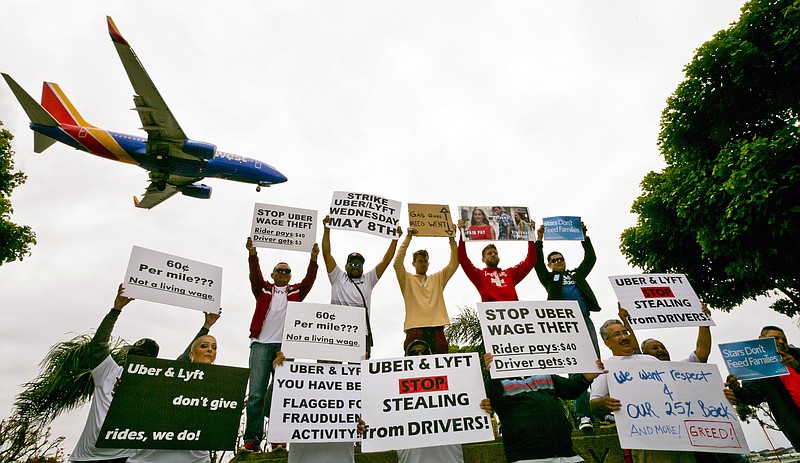PROVIDENCE, R.I. (AP) — A strike by Uber and Lyft drivers in cities across the United States this week caused barely a ripple to passengers looking to catch a ride, highlighting the challenges in launching a labor movement from scratch in an industry that is by nature decentralized.
Activists and others involved in the labor movement are still declaring it a success. It grabbed headlines, trended on Twitter and won the support of several Democrats running for president. The action was also closely watched by labor organizers, who are brainstorming about ways to build worker power in the 21st-century economy.
Drivers say they wanted to draw the attention of the public, technology investors and political leaders to their plight: low pay and a lack of basic rights on the job.
“The goal is to bring awareness to the incredible disregard for workers,” said Lyft driver Ann Glatt, who helped organize the San Francisco strike and protest outside Uber headquarters.
App-based workers are thought to comprise just a small fraction of the economy, but there are still millions of people making a living in gig work. Uber alone says it has nearly 4 million drivers, while Lyft has more than 1 million.
In pockets around the country, workers are starting to organize themselves, often with the help of workers’ rights groups and labor unions. In Silicon Valley, a workers’ rights group established Gig Workers Rising, which helped with Wednesday’s strike. In New York state, the AFL-CIO is pushing the Legislature to take steps to protect workers who get jobs through digital platforms. A campaign that started in Washington state this year pressured shopping service Instacart to stop counting tips toward workers’ base pay, and even won them back pay.
Among the Lyft and Uber drivers’ top issues are pay, a lack of transparency that makes it difficult to understand how much they were paid and why, and no due process when they are “deactivated,” or barred from the service.
The drivers and workers at other app-based platforms such as Instacart or food delivery service DoorDash are classified by the companies as independent contractors, leaving them without the same safeguards traditional workers receive, such as minimum wage, unemployment insurance, workers compensation and health and safety protections.
Uber on Thursday disclosed ahead of its Friday IPO that it had reached an agreement to settle with tens of thousands of drivers who dispute the company’s contention that they are independent contractors. It said the payments and attorneys’ fees could reach $170 million.
Uber maintains the drivers are independent because they choose whether, when and where to provide services, are free to work for competitors and provide their own vehicles. It said it has taken steps to make drivers’ earnings more consistent and to improve working conditions, including by providing discounts on gasoline and car repairs and tuition reimbursement for some drivers.
Lyft also pushed back on the complaints, saying its drivers’ hourly earnings have increased 7 percent over the last two years, that on average, they earn more than $20 per hour and that three-quarters of its drivers work fewer than 10 hours per week.

